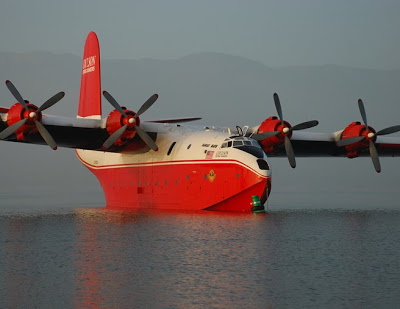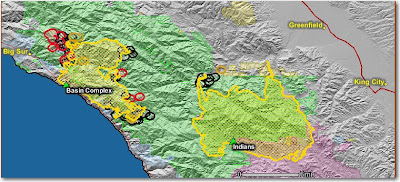The U. S. Forest Service in California is aggressively trying to get certain messages out about the fire situation in northern California by issuing a laundry list containing 10 “Key Messages“. They took the extraordinary step of having them inserted into the Northern California Geographic Area Coordination Center’s “News and Notes”, which usually contains just the bare facts and numbers about initial attacks and ongoing fires.
This may be in response to allegations by some that the USFS is losing many key firefighters to agencies that have much better pay and benefits packages, leaving the agency in California with too many unfilled positions and unstaffed engines. Here are some samples of the USFS “Key Messages”:
KM1: The Forest Service has over 4,000 firefighters stationed and available in California. They are engaged in aggressive firefighting efforts throughout the state.
KM2: The Forest Service can mobilize resources from other regions and states. We are ordering additional resources with support nationwide. We have even received international assistance from Canada with the Martin Mars aircraft.
(note from Wildfire Today: Wildfire Today reported on the Martin Mars air tanker here. It’s not exactly “international assistance from Canada”. The USFS recently signed it up under contract, just like any other contract resource. On both Friday and Saturday, the 61-year old ship made aborted attempts to fly down from British Columbia but had engine problems before landing on Lake Shasta and returned to Canada using just 3 engines. They will try a third time on Sunday. A Canadian infrared aircraft is also on contract and is being used in northern California, along with the two USFS infrared ships, and UAV’s from NASA, the Air Force, and the Navy.)
KM5: Every Modular Airborne Fire Fighting System (MAFFS) available in the country is currently in California. MAFFS are able to drop up to 3,000 gallons of water.
(“water”? The MAFFS drop long-term fire retardant. There are 6 MAFFS’s working, based out of McClellan. Last year there were approximately 16 large airtankers under federal contracts. This compares to 45+ during the “Siege of ’87”, another huge lightning bust in northern California.)
KM7: We recognize changing conditions and adjust by moving resources accordingly. For example, we may redirect people from one fire to help with another fire. By making progress on the Indians Fire, we were able to send those resources to the Basin Fire, (both on the Los Padres NF) ensuring of course that the firefighters get plenty of rest.
KM8: We are constantly moving, mobilizing and making adjustments on our resources. This is a standard operating procedure. We have been fighting fires successfully for over 100 years. This is what we do best.
(KM7 and KM8 are duplicates. “Moving resources” has been Under Secretary of Agriculture Mark Rey’s answer to the allegations of a lack of adequate resources due to retention problems within the USFS in California.)
KM9: Fuels are extremely dry and research has documented strong links between past climate variability and area burned in wildfires, particularly in the western United States. Projections from climate models suggest that burned areas and fire severity will increase in the future over much of the United States. These changes will affect fire suppression costs and resources, alter ecosystem characteristics, and increase potential fire risk to communities. (*See further approved Climate Change talking points at http://www.fs.fed.us/research/fsgc/briefing-papers/3-CC-FS-and-Fire.pdf
(In other words, “It’s not our fault.”)



